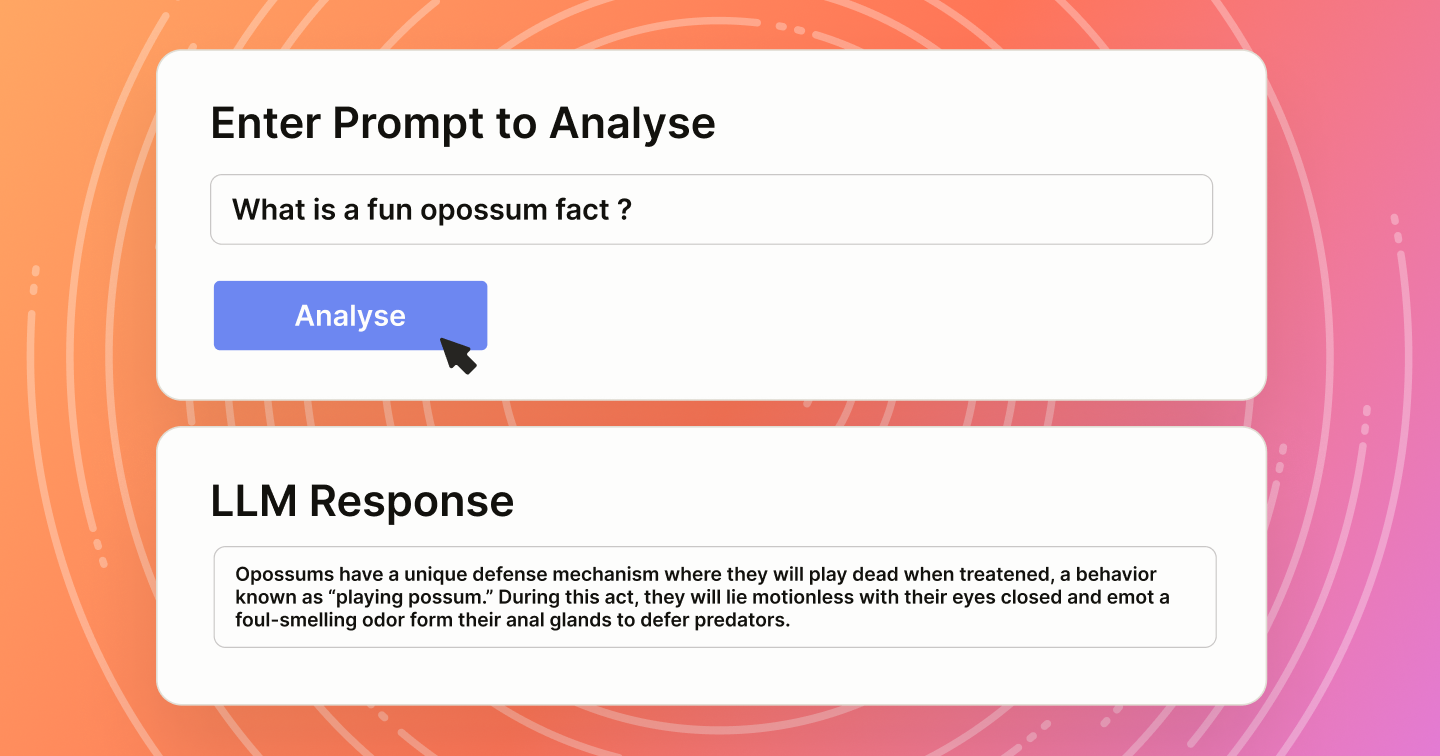Connect to LLM Backend

note
For information about modifying this plugin or creating your own custom plugins, see Customize and Build Your Own Plugins.
For general plugin information, see Plugins for projects and Plugin FAQ.
About
This plugin connects to an open LLM endpoint, allowing you to generate responses as part of the annotation workflow.

Plugin
Before using this, replace the MY_URL_ROOT value with a URL that does not require authentication. This would typically be an internal service or an LLM behind a proxy.
window.LSI = LSI;
const baseUrl = "MY_URL_ROOT";
/**
* Makes a request to the configured LLM sending the given prompt
*/
async function fetchLLM(prompt) {
const params = {
prompt,
llm_endpoint_name: "chatgpt",
redteam_categories: ["cat1"],
};
const searchParams = new URLSearchParams(params).toString();
const url = `${baseUrl}?${searchParams}`;
const response = await fetch(url, {
method: "POST",
headers: {
"Content-Type": "application/json",
// No auth needed because the API is open
},
});
const data = await response.json();
}
/**
* Sends the introduced prompt to the LLM endpoint and attaches the given results to the annotation
*/
async function sendPrompt() {
const promptTag = LSI.annotation.names.get("prompt");
promptTag.submitChanges();
const prompt = promptTag.result?.value.text.join("\n");
if (!prompt) {
Htx.showModal("The prompt is empty", "error");
return false;
}
let response;
// console.log("Input prompt:" + prompt);
try {
response = await fetchLLM(prompt);
} catch (error) {
Htx.showModal(
`Error fetching the LLM endpoint "${baseUrl}": ${error.message}`,
"error",
);
return false;
}
const results = [];
const llmResponse = response.LLM_response;
if (llmResponse) {
const llmResult = {
from_name: "response",
to_name: "placeholder",
type: "textarea",
value: { text: [] },
};
results.push(llmResult);
}
// console.log("Response:" + llmResponse["LLM_response"]);
const category = response.Category?.category;
if (category?.length) {
const attackResult = {
from_name: "category",
to_name: "placeholder",
type: "choices",
value: { choices: category },
};
results.push(attackResult);
// console.log("Category:" + category);
}
const reasonText = response.Type?.reason;
if (reasonText) {
const reasonResult = {
from_name: "reason",
to_name: "placeholder",
type: "textarea",
value: { text: [reasonText] },
};
results.push(reasonResult);
// console.log("Reason:" + reason);
}
LSI.annotation.deserializeResults(results);
}
/**
* Sets up the onClick event of the template to trigger the LLM request
*/
function setup() {
const aBtn = document.querySelector(".analyzeButton");
const button = document.createElement("button");
button.textContent = "Analyze"; // Set the button text
// Attach an onclick event to the button
button.onclick = sendPrompt;
// Insert the button into the div
aBtn.replaceChildren(button);
}
setup();
Related LSI instance methods:
Labeling config
Tip
You can add value="$text" to the TextArea parameters of the prompt to pre-fill the text from your data.
<View>
<Style>
.lsf-main-content.lsf-requesting .prompt::before { content: ' loading...'; color: #808080; }
.placeholder { display: none; }
.llm_response textarea { background-color: #f0f0f0; /* Optional: gives a "disabled" feel */ }
.analyzeButton button {
background: #1890ff;
border-color: #1890ff;
box-shadow: 0 2px 0 rgba(0, 0, 0, .045);
color: #fff;
text-shadow: 0 -1px 0 rgba(0, 0, 0, .12);
padding: 4px 15px;
}
</Style>
<View className="placeholder">
<Text name="placeholder" value="placeholder" />
</View>
<Header value="Enter Prompt to Analyze:"/>
<TextArea
name="prompt"
toName="placeholder"
transcription="true"
showSubmitButton="false"
editable="true"
rows="4"
maxSubmissions="1"
placeholder="Type the prompt here..."
/>
<View className="analyzeButton"></View>
<Header value="LLM Response:"/>
<View className="llm_response">
<TextArea
name="response"
toName="placeholder"
transcription="true"
rows="6"
showSubmitButton="false"
editable="false"
smart="false"
maxSubmissions="1"
placeholder="The LLM response will appear here..."
/>
</View>
<Header value="Category:"/>
<Choices name="category" toName="placeholder" choice="single" showInLine="true">
<Choice value="none" />
<Choice value="cat1" />
<Choice value="cat2" />
<Choice value="cat3" />
</Choices>
<Header value="Reason"/>
<TextArea
name="reason"
toName="placeholder"
rows="2"
editable="false"
smart="false"
maxSubmissions="1"
placeholder="Write something here..."
/>
</View>Related tags:
Sample data
[
{
"data": {
"text": "What is the closest relative to an opossum?"
}
},
{
"data": {
"text": "What is a fun opossum fact?"
}
},
{
"data": {
"text": "Why are opossums cool?"
}
}
]